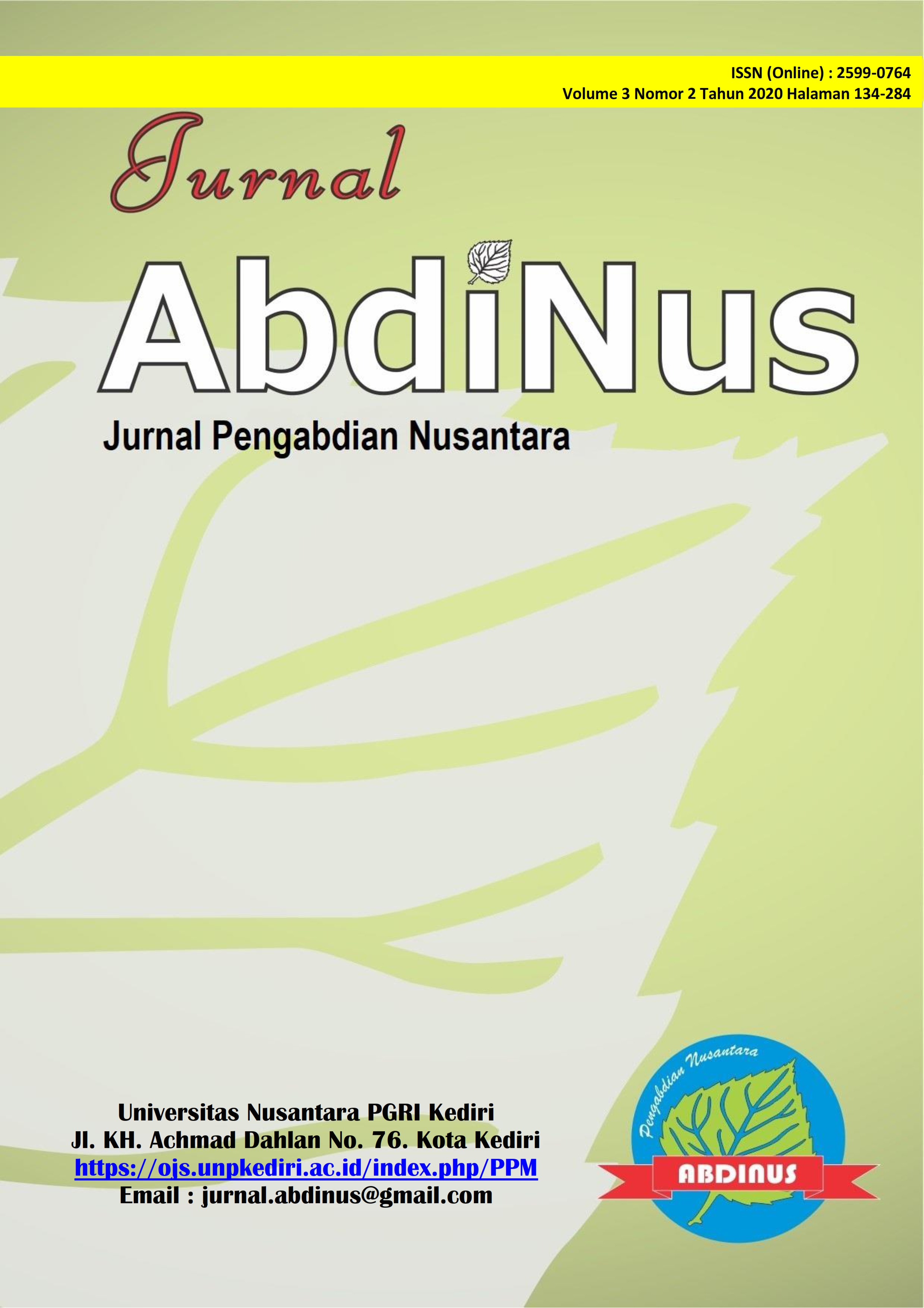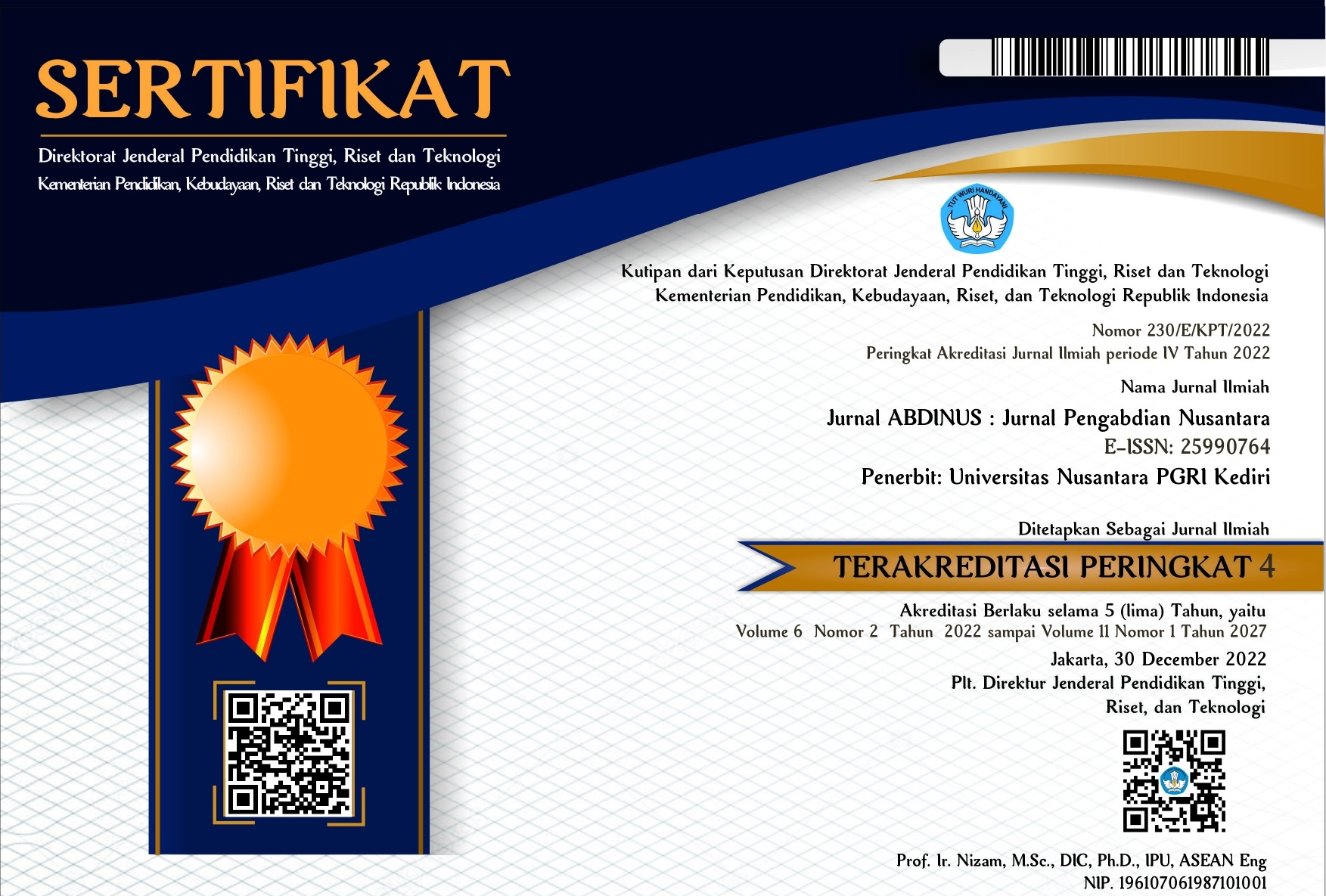Pendampingan Kesehatan Aplikasi Case-Based Learning (CBL) dalam Peningkatan Efikasi Diri Pencegahan Perilaku Berisiko HIV Pada Mahasiswa Perguruan Tinggi Di Kota Bandung
DOI:
https://doi.org/10.29407/ja.v3i2.13659Keywords:
Self-efficacy, HIV/AIDS, Risk behavior, CBLAbstract
Strategies in reducing HIV risk can be done by strengthening knowledge and self-efficacy to avoid various HIV risk behaviors. The effort of the prevention is to apply the case-based learning (CBL) method of HIV cases. This activity was carried out for 21 students who came from several colleges in Bandung. The health mentoring was held in two days, each day for 4 hours by implementing HIV/AIDS cases as a trigger for increasing knowledge and self-efficacy in preventing HIV risk behavior. The results after conducting CBL showed there was an increase in the level of HIV knowledge by 19,1%. Students who had HIV knowledge in the good category at first as much as 71,4% and increased to 90,5% after mentoring. In addition, there was a significant increase in the level of self-efficacy. Where at the beginning of health mentoring, students who had high self-efficacy were 28,6% and increased to 80,9% after CBL. The application of CBL can increase HIV knowledge more comprehensively so that it has an impact on increasing the self-efficacy of preventing HIV risk behavior.
Downloads
References
Bandura, A. (2004). Health promotion by social cognitive means. Health Education & Behavior, 31(2), 143–164.
Hakkarainen, P., Saarelainen, T., & Ruokamo, H. (2007). Towards meaningful learning through digital video supported, case based teaching. Australasian Journal of Educational Technology, 23(1).
Hudson, J. N., & Buckley, P. (2004). An evaluation of case-based teaching: evidence for continuing benefit and realization of aims. Advances in Physiology Education, 28(1), 15–22.
Kementerian Kesehatan RI. (2017). Laporan Situasi Perkembangan HIV-AIDS dan PIMS di Indonesia Januari-Desember 2017. Jakarta.
Patrick, M. E., O’Malley, P. M., Johnston, L. D., Terry-McElrath, Y. M., & Schulenberg, J. E. (2012). HIV/AIDS risk behaviors and substance use by young adults in the United States. Prevention Science, 13(5), 532–538.
Pettifor, A. E., Measham, D. M., Rees, H. V, & Padian, N. S. (2004). Sexual power and HIV risk, South Africa. Emerging Infectious Diseases, 10(11), 1996.
Stewart, S. R., & Gonzalez, L. S. (2006). Instruction in professional issues using a cooperative learning, case study approach. Communication Disorders Quarterly, 27(3), 159–172.
Thistlethwaite, J. E., Davies, D., Ekeocha, S., Kidd, J. M., MacDougall, C., Matthews, P., … Clay, D. (2012). The effectiveness of case-based learning in health professional education. A BEME systematic review: BEME Guide No. 23. Medical Teacher, 34(6), e421–e444.
Wilandika, A. (2017a). Analisis Faktor Instrumen Efikasi Diri Pencegahan Perilaku Berisiko HIV. Journal of Holistic Nursing Science, 4(1), 25–33.
Wilandika, A. (2017b). Pengaruh Case-Based Learning Terhadap Pengetahuan HIV/AIDS, Stigma Dan Penerimaan Mahasiswa Keperawatan Pada ODHA. Jurnal Pendidikan Keperawatan Indonesia, 3(1), 1–12.
Wilandika, A., & Ibrahim, K. (2016). Efikasi Diri Pencegahan Perilaku Berisiko HIV pada Kalangan Mahasiswa Muslim. Jurnal Keperawatan ’Aisyiyah, 3(2), 11–21.















